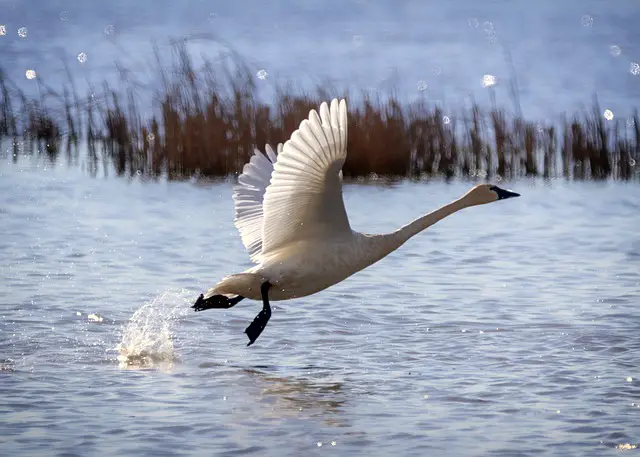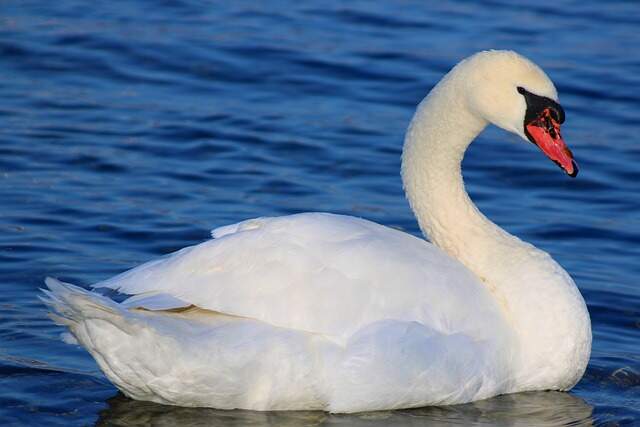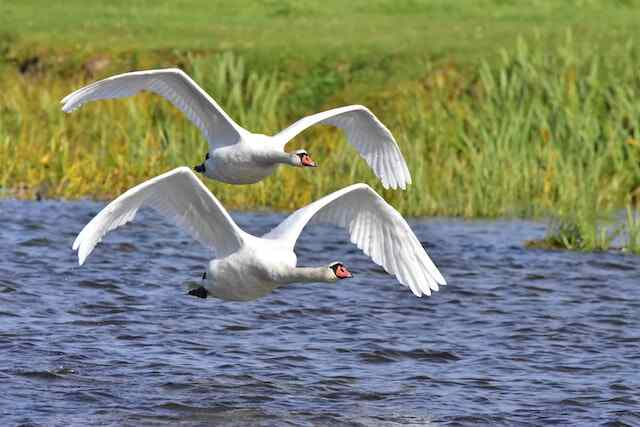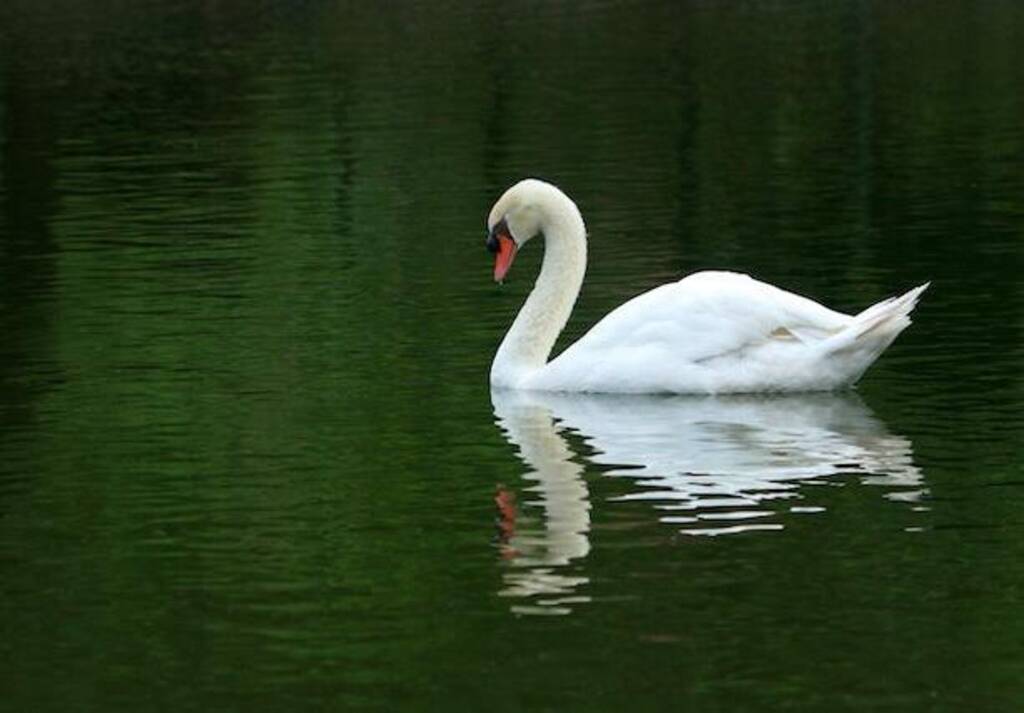Swans are among the most captivating and elegant creatures in the animal kingdom. These birds are known for their graceful movements and stunning appearance. But did you know that there’s more to these birds than meets the eye? In this article, we’ll delve into some fun and interesting fun facts about swans that you might not have known before.
Table of Contents
- 1 Key Takeaways
- 2 Fun Facts About Swans
- 3 The Graceful Beauty of Swans
- 4 Their Iconic Beauty in Art and Literature
- 5 Swan Species Around the World
- 6 Swan Habits and Behaviors
- 7 The Importance of Swan Communication
- 8 Swan Parenting and Family Life
- 9 Swan Mythology and Symbolism
- 10 Threats and Conservation Efforts
- 11 Conclusion
- 12 More Fun Facts About Swans
- 13 FAQs: Discover Fun Facts About Swans
- 13.1 What are some fun facts about swans?
- 13.2 What interesting trivia is there about swans?
- 13.3 Are there different species of swans around the world?
- 13.4 What are some habits and behaviors of swans?
- 13.5 How do swans communicate?
- 13.6 What is the parenting and family life of swans like?
- 13.7 Are swans symbolic in mythology?
- 13.8 What are the threats to swans and conservation efforts in place?
- 14 Author
Key Takeaways
- Swans are known for their elegant beauty and graceful movements
- There are several different swan species found in various parts of the world, each with its own unique characteristics
- Swans use a variety of vocalizations, body language, and visual displays to communicate with other birds
- These birds are dedicated parents and have a strong bond with their offspring
- Swans are facing threats such as habitat loss and hunting, but conservation efforts are being made to protect them

Fun Facts About Swans
Dive into the enchanting world of swans as we uncover some fascinating and delightful facts about these graceful birds. From their regal beauty to their remarkable behaviors, swans never cease to captivate our hearts. Join us on this journey of discovery as we explore the intriguing lives of these iconic avian wonders.
The Graceful Beauty of Swans
Swans are renowned for their graceful beauty, captivating people for centuries with their enchanting appearance and elegant movements. Here are some unique swan trivia that you probably did not know:
| Feature | Uniqueness |
|---|---|
| Long necks | Swans have more vertebrae in their neck than any other bird, with up to 25! |
| Feathers | Swans have fluffy feathers that trap air and insulate their bodies, helping them stay warm in the water. |
| Movements | Swans have a unique way of swimming, where they tuck their feet in and use only their webbed feet for propulsion, resulting in their iconic gliding movements. |
But swans’ beauty is not just physical – their graceful behavior is also a sight to behold. Did you know that swans are one of the few bird species that mate for life? They also have a strong sense of family, and parents are dedicated to protecting their young and raising them to independence.
Their Iconic Beauty in Art and Literature
Swans have been a popular subject in art and literature for centuries, admired for their grace and elegance. From ancient mythology to modern-day fairy tales, swans have often been portrayed as symbols of beauty, purity, and innocence.
They have also been used in many famous works of art, such as Tchaikovsky’s ballet Swan Lake and the famous painting The Princesse de Broglie by Ingres.
All in all, swans are fascinating creatures that have captured the attention and imagination of people for centuries. In the next section, we will explore the different swan species that can be found around the world.
Swan Species Around the World
Swans are found in many parts of the world, each with their unique traits and behaviors. Let’s take a look at some of the most interesting swan species:
| Species | Location | Fun Fact |
|---|---|---|
| Mute Swan | Europe, Asia, North America | The “mute” in their name refers to their lack of vocalization, although they are not entirely silent. |
| Trumpeter Swan | North America | The largest native waterfowl in North America, with a wingspan of up to 10 feet. |
| Black Swan | Australia, New Zealand | The only swan species with black feathers, making it highly distinctive. |
| Whooper Swan | Europe, Asia, North America | Known for their beautiful singing, they are a symbol of love and fidelity in Finnish mythology. |
There are also several other species of swans, including the Bewick’s swan, tundra swan, and the coscoroba swan. Each of these birds offers their unique attributes and lesser-known swan facts, making them a fascinating subject of study and admiration.

Swan Habits and Behaviors
Swans are not only beautiful creatures, but they also exhibit fascinating habits and behaviors.
During nesting season, swans can be highly territorial and protective of their nesting site. In some cases, they may even attack humans who come too close. Swans also mate for life and can form strong bonds with their partners. They perform a courtship display, where they face each other and bow their heads in a synchronized dance.
Swans are also known for their migration patterns. Some species of swans fly thousands of miles every year to reach their breeding grounds. They typically fly in a V-formation, which allows them to conserve energy and take turns leading the flock.
One lesser-known fact about swans is that they can actually sleep while floating on the water. They keep one eye open and one half of their brain alert to potential dangers, while the other half rests.
Surprisingly, swans also have excellent memories. They can remember faces and voices, and can even recognize individual humans who have interacted with them before. This makes them highly intelligent creatures.
All in all, the habits and behaviors of swans are truly amazing and worth appreciating.
The Importance of Swan Communication
Swans are known for their vocal and visual communication. They make a variety of sounds, including honks, whistles, and grunts, which they use to communicate with each other. Interestingly, each swan has a unique voice, allowing them to recognize each other’s calls.
In addition to vocalizations, swans also use body language to communicate. They often hold their wings in a specific position to signal their mood or intent. For example, when swans feel threatened, they may lower their necks and hold their wings out, appearing larger and more intimidating to potential predators.
When it comes to courtship, swans have intricate displays that involve both vocalizations and body language. They may swim in synchronized patterns or engage in mirroring behavior to attract a mate. Once paired, swans continue to communicate with each other through various displays and gestures to strengthen their bond.
Overall, the communication methods of swans are quirky and fascinating, highlighting the intricate nature of their social interactions.
Swan Parenting and Family Life
Swans are known for their strong family bonds and dedication to their young. In fact, they typically form lifelong partnerships and mate for many years. During the breeding season, swans will actively defend their nests and territories and work cooperatively to raise their offspring.
| Swan Nesting Habits | Swan Offspring |
|---|---|
| Swans build large nests, often in shallow water near the shore or on small islands. They use a variety of materials to build their nests, including twigs, reeds, and leaves. These nests can be more than six feet in diameter and several feet high. | Swans typically lay between 3 and 8 eggs per season. The eggs are incubated by both parents and hatch after about 35 days. Once the cygnets are born, they will stay with their parents for up to a year, learning to swim, forage for food, and fly. During this time, the parents will protect and care for their young, teaching them essential survival skills. |
In addition to protecting their young from potential predators, swans will also defend their offspring against other swans and animals, including ducks, geese, and even humans. Swans have been known to aggressively attack kayakers, boaters, and other people who venture too close to their nests or young.
Interestingly, swan parents will often perform a dance together in the water, which helps to strengthen their bond and reinforce their partnership. This dance involves swimming in unison and dipping their heads and necks in the water, creating a heart shape.
Overall, swans are devoted parents and their family life is a testament to the strong bonds that exist between these elegant birds.

Swan Mythology and Symbolism
Swans hold a significant place in mythology and symbolism across various cultures. In Greek mythology, the swan was associated with the god Apollo and was considered a symbol of music, poetry, and inspiration. According to a popular Greek myth, Zeus transformed into a swan to seduce Leda, resulting in the birth of Helen of Troy.
In Celtic mythology, the swan was believed to represent the soul’s journey and transformation. Swans were also considered sacred birds and were often associated with the goddess Brigid. In Hindu mythology, swans were considered sacred birds and were associated with the god Brahma.
In many cultures, the swan is seen as a symbol of grace, beauty, and purity. They are often used to represent love, fidelity, and loyalty. In literature and art, swans are frequently portrayed as graceful and elegant creatures, inspiring poets and artists alike.
Interestingly, swans also have a darker side in some cultures. In Norse mythology, the swan maiden was a type of shapeshifter who could take on the form of a swan. In some legends, swans were also considered to be harbingers of death, particularly in Celtic folklore.
Overall, the symbolism and mythology surrounding swans highlight their beauty, grace, and cultural significance. These fascinating creatures continue to capture our imaginations and inspire us in various ways.
Threats and Conservation Efforts
Despite their elegant and graceful presence, swans face numerous threats to their survival. Habitat loss, pollution, and hunting are some of the major challenges that these birds encounter.
Historically, swans have been hunted for their meat, feathers, and skins, leading to a significant decline in their population. In some cultures, swans have been viewed as a delicacy, while in others, their feathers have been used for decorative purposes.
Another threat to swans is habitat loss. Wetland destruction, urbanization, and development projects have resulted in the loss of crucial nesting and feeding grounds for swans.
Pollution is also a major threat to swans. Chemicals and pollutants in the water can cause health issues for swans, affecting their reproduction and overall survival.
In light of these threats, conservation efforts have been put in place to protect swans and their habitats. Various organizations around the world work to monitor and manage swan populations, as well as their habitats.
For example, in the United States, the Mute Swan Management Plan was created to control the population of mute swans, a non-native species that competes with native species for resources. Efforts have also been made to restore wetlands and other important habitats for swans.
Overall, conservation efforts have had a positive impact on the survival and wellbeing of swans. However, it is important that we continue to raise awareness about the importance of protecting these magnificent birds and their habitats.
Conclusion
Swans truly are nature’s elegant birds, captivating us with their beauty and fascinating behaviors. Throughout this article, we’ve explored fun and interesting facts about swans, such as their gracious movements, parenting habits, and unique vocalizations. We’ve also learned about the different swan species around the world and their cultural significance in mythology and symbolism.
However, despite their majestic presence, swans face numerous threats to their survival, including habitat loss and hunting. Fortunately, there are conservation efforts underway to protect these beautiful birds and their habitats.
Let us appreciate the captivating nature of swans and do our part in preserving their beauty and importance in our ecosystem.

More Fun Facts About Swans
Swans, the epitome of grace and beauty, harbor an array of captivating secrets beyond their elegance. Here are 20 intriguing facts about these majestic birds that may surprise you:
- Feathered Royalty: Swans possess more neck vertebrae, up to 25, than any other bird species.
- Insulation Experts: Their fluffy feathers trap air, providing insulation in the water and keeping them warm.
- Unique Swimmers: Swans showcase an exclusive swimming style, tucking their feet and relying solely on webbed feet for that iconic gliding motion.
- Lifelong Love: Swans form lasting bonds, often mating for life and displaying strong family values.
- Artistic Inspirations: Swans have been celebrated in art and literature for centuries, symbolizing beauty, purity, and innocence.
- Mute Swan: Found in Europe, Asia, and North America, their name is misleading – they’re not entirely silent.
- Trumpeter Swan: North America’s largest native waterfowl, boasting an impressive wingspan of up to 10 feet.
- Black Swan: Unique with its all-black plumage, a distinctive sight in Australia and New Zealand.
- Whooper Swan: Celebrated for their melodious calls, they symbolize love and fidelity in Finnish mythology.
- Bewick’s Swan: With a distinctive yellow and black bill, these swans are winter visitors to the UK.
- Tundra Swan: Known for their vibrant yellow facial patches, they grace North America during migration.
- Coscoroba Swan: A South American native, recognized for its striking white plumage and red beak.
- Territorial Nesting: Swans fiercely protect their nests, even resorting to aggressive tactics to safeguard their young.
- Courtship Display: Swans partake in synchronized dances and displays, showcasing their bond.
- Migratory Wonders: Some swan species embark on arduous migrations, flying in energy-efficient V-formations.
- Alert Sleepers: Swans can sleep while floating on water, with one eye open and half their brain awake to detect danger.
- Exceptional Memory: These birds remember faces, voices, and even individuals, displaying remarkable intelligence.
- Vocal Variances: Swans make various sounds, with each bird having a unique voice, allowing them to recognize one another.
- Body Language: Swans use specific wing and neck positions to convey moods and intentions.
- Family Devotion: Swans are devoted parents, constructing large nests and nurturing their young for up to a year.
FAQs: Discover Fun Facts About Swans
What are some fun facts about swans?
Swans are known for their elegant beauty and fascinating behaviors. Here are a few fun facts about swans:
What interesting trivia is there about swans?
Swans have long necks that allow them to reach underwater vegetation. They also have fluffy feathers that help keep them warm.
Are there different species of swans around the world?
Yes, there are various swan species found in different parts of the world. Each species has its own unique characteristics and behaviors.
What are some habits and behaviors of swans?
Swans are known for their nesting and mating rituals, as well as their migration patterns. They also engage in social interactions with other swans.
How do swans communicate?
Swans communicate through vocalizations, body language, and visual displays. These forms of communication are used for courtship, establishing territory, and signaling danger.
What is the parenting and family life of swans like?
Swans are dedicated parents and exhibit protective behaviors towards their young. They have unique nesting habits and raise their offspring with care.
Are swans symbolic in mythology?
Yes, swans hold cultural significance in mythology and symbolism. They are represented in various cultures and belief systems, often associated with beauty and grace.
What are the threats to swans and conservation efforts in place?
Swans face threats such as habitat loss, pollution, and hunting. Conservation efforts are being made to protect swans and their habitats, with success stories and initiatives in place.



